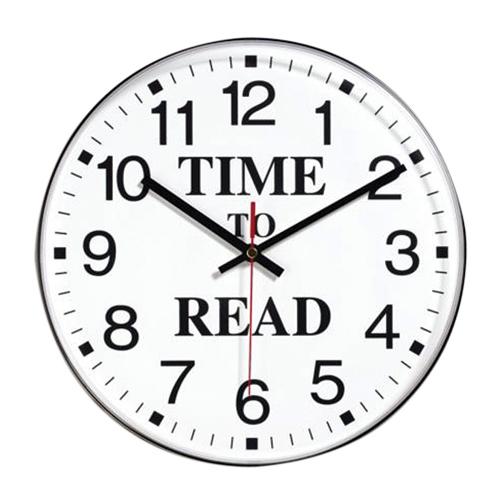Reading tips to optimize your productivity
Often, the busy routine doesn’t allow us to do anything other than work. Reading tips, even though it is not a common habit for some people, can be a strong ally in optimizing productivity and personal growth. In other words, it is possible to acquire the good habit of reading, increase performance at work and favor professional development.
Anúncios
Before choosing between the best titles in the bookstore or library, it is necessary to assess what difficulties are encountered when trying to adopt the habit of reading. Check out the top strategies to circumvent common problems and get started today!
Reading Tips – Make a time to dedicate yourself to reading.
View the book as a commitment to yourself and your productivity. Mark your calendar or set an alarm on your cell phone as a reminder of the meeting.

Get familiar with the book, flip through its pages, analyze the cover and interior illustrations. Search for the name of the illustrator artists, read the summary of the author’s biography, which accompanies the back cover or last pages. Don’t expect to devote long hours to reading at first. The habit needs to be created little by little.
Avoid reading out of obligation
Obligation never produces good results, as it is usually against the will. As in school, a period in life when we are forced to read titles that are not so interesting for that age group (great classics, for example, which today may be your favorites). This often leaves us conditioned to understand that reading must be done out of obligation.
So look for readings that you enjoy. As for the books on productivity optimization, it is interesting to see them as work. Thus, the dedication placed in reading is directed towards professional life and career.
Feel free to start another book.
Fiction, detective novel, self-help, technical knowledge, etc. Regardless of topic preference, it’s important to feel free to start another book along with your chosen title for optimizing productivity.

In this way, the head is able to explore other subjects and rest from the previous topic, expanding knowledge and encouraging the habit. Therefore, it is essential to combine a pleasant reading with a necessary one.
Reading Tips – The quietest time of your day is the ideal time
Think about your whole routine and try to remember that space between tasks that is usually calmer. Be it at lunchtime, in the afternoon or minutes before bed. Dedicate that moment to reading, even if it’s just a few minutes of tranquility.
By organizing yourself to always read at the same time, the body responds to the habit little by little, and soon it will be automatically obeying the reading routine. When you realize, that little moment in everyday life will have become essential.
Reading Tips – Collect and be proud of your finished readings
Organize a board, blackboard or collage to collect the titles you’ve finished. View the task as a challenge, as an integral part of your professional and personal growth. Take pride in adding a new book title and set goals, such as: reading a certain amount of books for a month, a semester, or a year.
Even starting with small books, it is essential to give importance to each finished title. With this, personal competitiveness is also created to “conquer” books, as a kind of medals or trophies.
Now, after having given the tips, it is necessary to choose books to promote the creation of the habit. In addition to the great habit of reading, some titles offer help in optimizing productivity.
Combining the useful with the pleasant, books that focus on topics such as professional performance and career development are excellent allies for those looking for a light and edifying read at the same time.
Reading tips
Check out some of the best titles for optimizing productivity.
Atomic Habits – James Clear
The book Atomic Habits, written by James Clear, is direct in its intention: the author defends the idea of the force of habit and how changing certain attitudes can improve – and a lot – your productivity and professional growth.
Clear demonstrates that time should be given to change from old habits to new ones, without forcing or forcing the body to replicate such attitudes. That is, you have to go slowly and not blame yourself for any mistakes on the way.
The Power of Habit – Charles Duhigg
A star among top productivity and career books, The Power of Habit is something of a holy grail for top entrepreneurs around the world. The book obviously explains the power of habit and all the positive changes it can bring about.
The Power of Habit addresses the strength of repetition, the act of repeating good habits daily, so that the body understands its importance and need.
Fast and Slow – Daniel Kahneman
Daniel Kahneman recognizes very well the importance of habits. Nobel laureate in economics, his ideas on productivity and finance still make a big impact in the fields of economics, politics and psychology.
The book Fast and Slow, written by him, highlights two main types of thinking:
- Fast: following intuition, emotion and sensitivity;
- Slow down: using logic, strategy and math.
In addition, the author highlights methods to avoid mental failures and low productivity.
Book SCRUM – The Art of Doing Twice the Work in Half the Time – Jeff Sutherland
Much talked about in the business world today, SCRUM is an organizational style for project management. Focusing on agility and delivery of complex tasks in a timely manner, SCRUM is a technique used to increase the productivity of various segments.
In the book, the author teaches its principles using executive scenarios, demonstrating that SCRUM is highly viable in all environments – including personal ones. During the reading, the reader is invited to apply certain SCRUM methods in his life, when organizing small tasks of the day, such as: washing the dishes, taking the dog for a walk, etc.
The Bullet Journal Method – Ryder Carroll
The Bullet Journal is basically a notebook where you gather ideas or tasks to get done quickly. It’s a notebook style to ensure that no insights are lost throughout the day.
The Bullet Journal Method is the perfect book to learn how to properly and productively use your important notebook. In the book, the author teaches the reader to create his own bullet journal with index, monthly, daily and future records.
Work 4 Hours a Week – Timothy Ferriss
In this book, the author explains how to correctly apply your productivity to work for just 4 hours a week. Although it seems impossible, Timothy makes it clear that it is possible to set goals, focus on attainable goals and achieve them in 4 hours of work per week. In addition, the book is highly suitable for people who seek self-knowledge.
Aiming at the professional future, with concentration and willingness to learn, these books can be the best company for those who want to optimize productivity.


